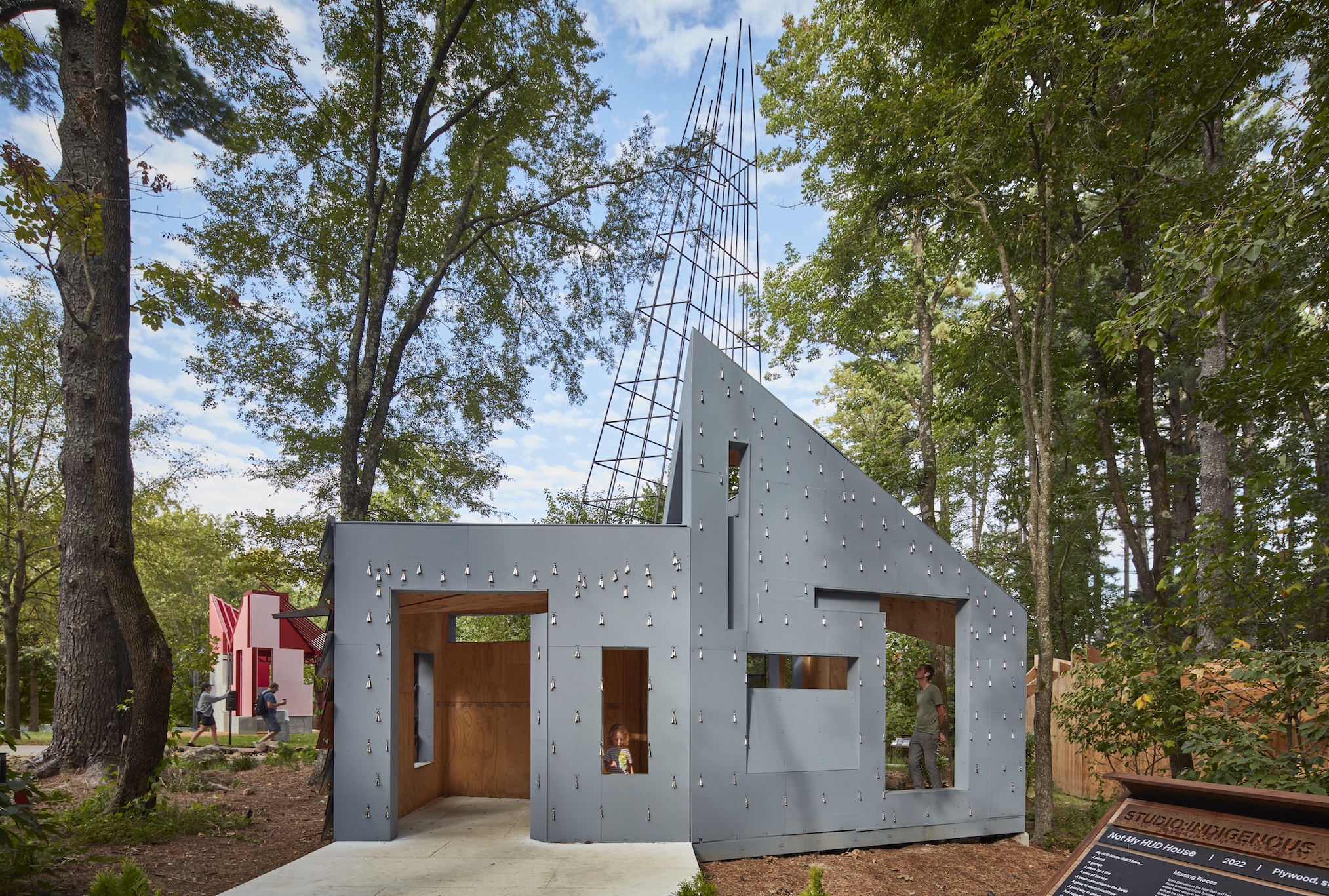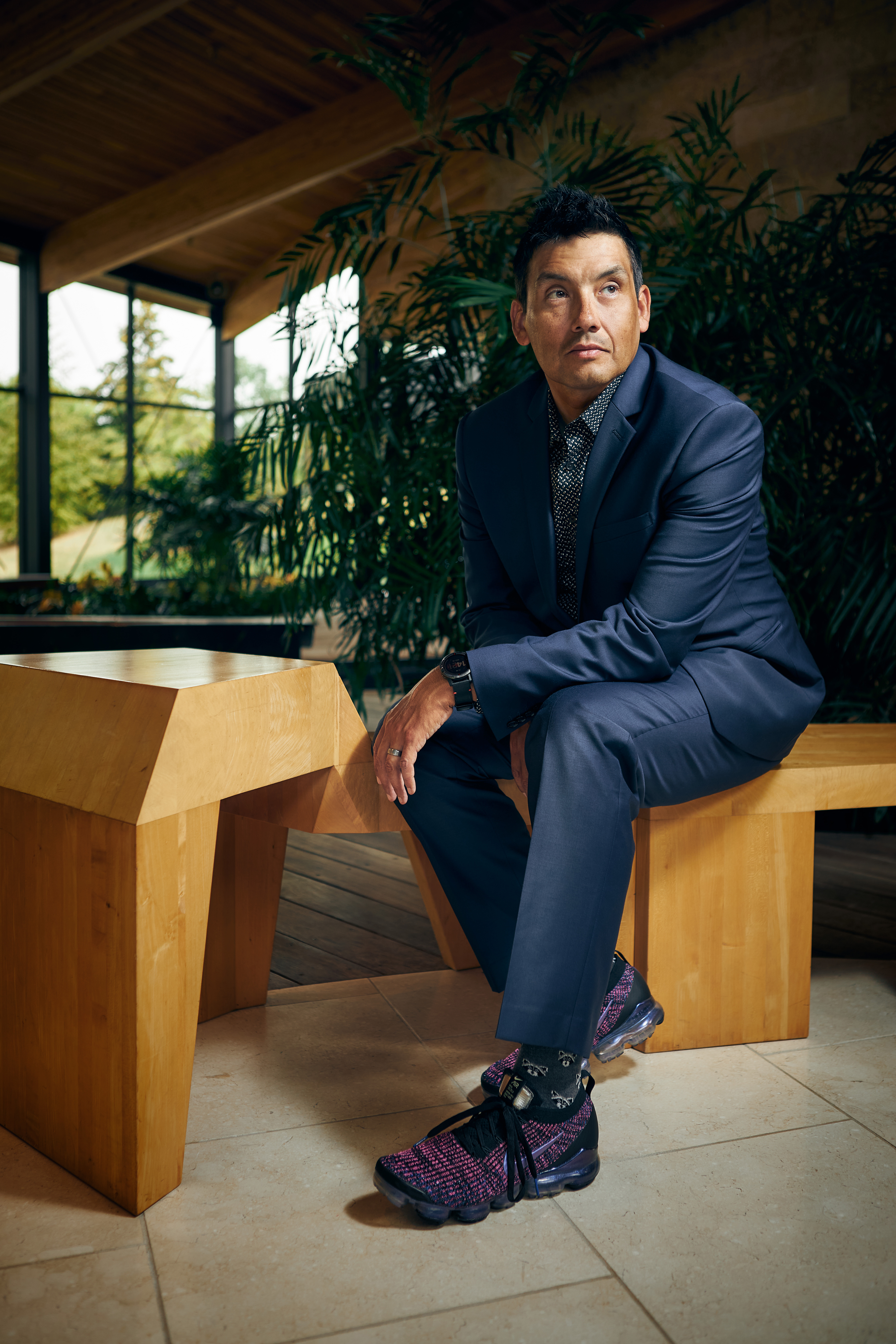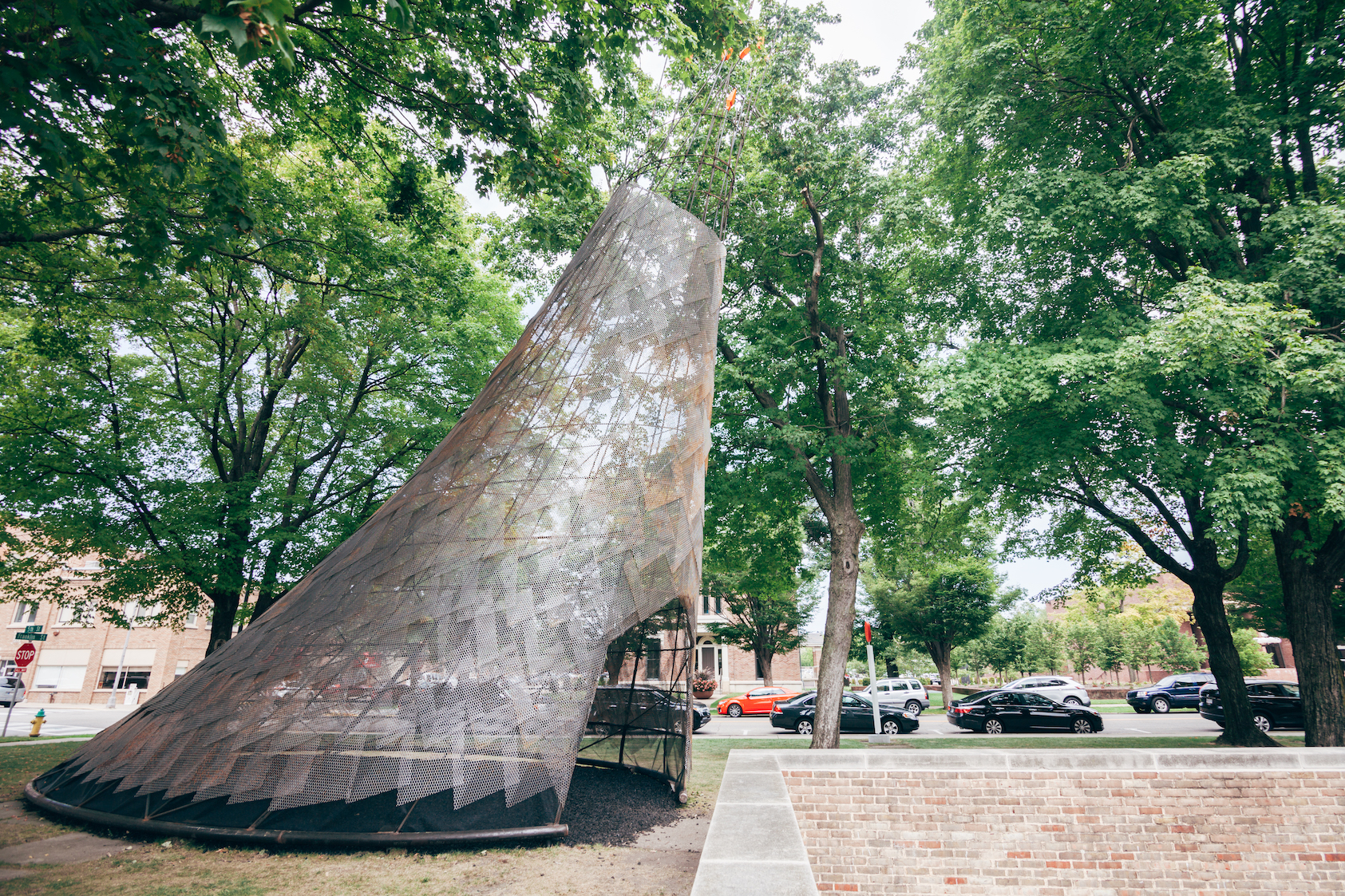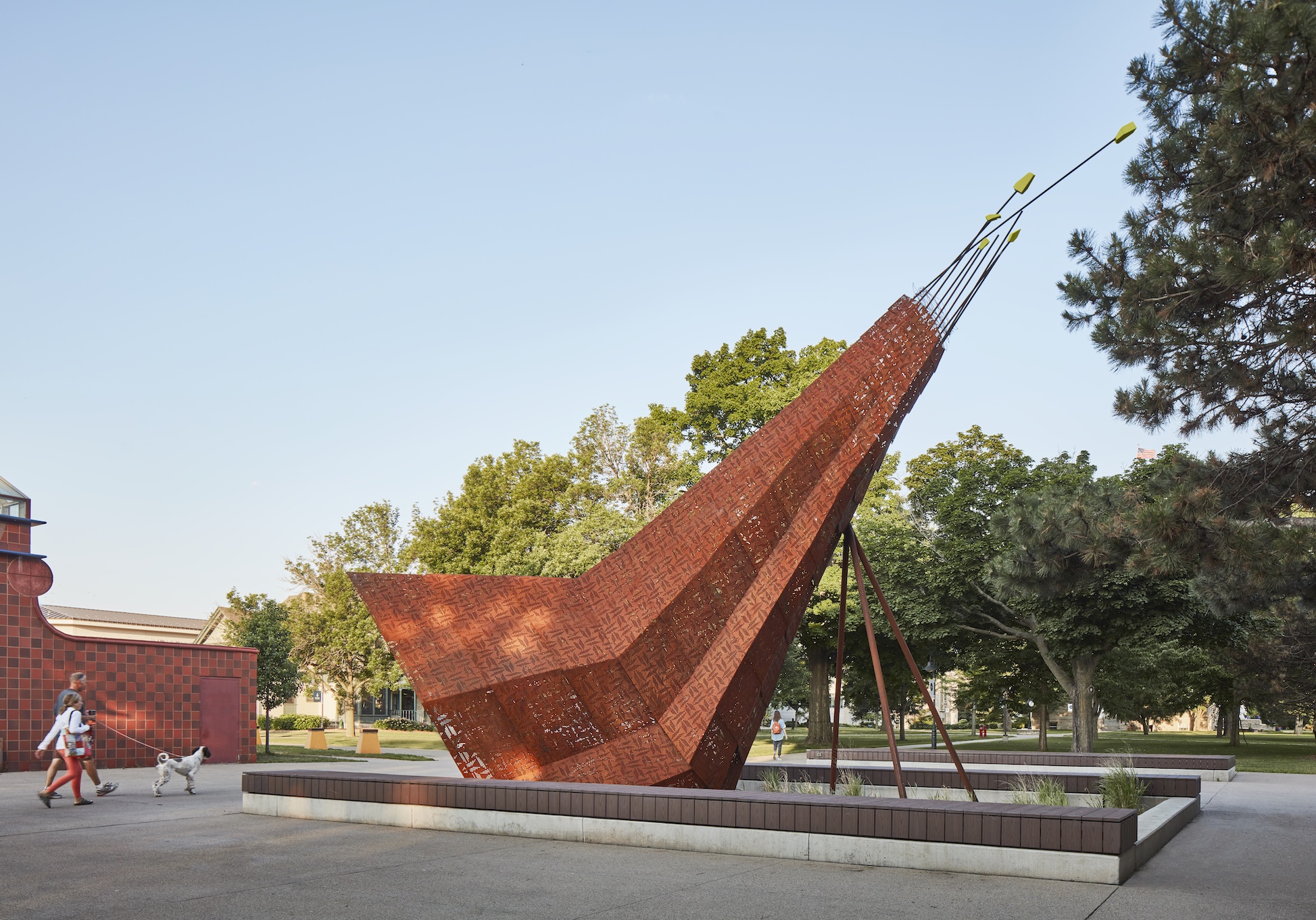DATE↓
STORY TYPE↓
AUTHOR↓
Indigenous architect Chris Cornelius wants to design spaces that better serve their inhabitants and their surroundings.

What makes a place a home?
The makeup of where we live—including the building, our neighbors and neighborhood, and the local flora and fauna—offers opportunities to reflect who we are and how we understand our relationship to the world. The health of any aspect of this system impacts the others and the whole. Our homes exist in this way, inextricable from what sustains them and what they sustain.
So why are houses across the planet, and throughout history, often disconnected from the land and culture to which they belong? Work by architect Chris Cornelius, a citizen of the Oneida Nation of Wisconsin and founder of the design practice studio:indigenous, regularly highlights the problem and offers possible ways forward, informed by an Indigenous perspective.
Cornelius thinks critically about the buildings designed by and for his community, and his structures—such as the temporary “Wiikiaami” pavilion in Columbus, Indiana, and the Indian Community School in Franklin, Wisconsin, on which he collaborated with architect Antoine Predock—impact users in ways far beyond merely referencing symbolic animals or traditional Native American dwellings. In 2018, he was one of 18 Indigenous designers who represented Canada at the Venice Architecture Biennale with an installation on what Indigenous thinking and spirituality brings to the field.
For Indigenous people in the United States and Canada—many of whom, severed from their ancestral lands, have grown up in government-subsidized homes in reservations—housing is inseparable from its legacy as a tool for colonization. Two years ago, Cornelius, in a studio he taught at the Yale School of Architecture at the invitation of its dean, Deborah Berke, took this legacy as a point of departure and, using Indigenous knowledge systems such as storytelling and narrative pedagogy, sought ways to reorient it.
His students’ research made evident how homes designed and constructed by the U.S. Department of Housing and Urban Development (HUD) for Indigenous families routinely fail to accommodate how those families live. Cornelius grew up in such a home, and knows this firsthand. “Not My HUD House” (2022), a modular housing prototype he was working on for the Crystal Bridges Museum of American Art while teaching the course, showed viewers how Indigenous people think about space. Key aspects of Indigenous architecture—such as a hearth (for cooking, gathering, ceremonies, and heating); a view to the sky; local materials fit for the area’s climate; and flexible, communal spaces—were less a singular resolution than an invitation to consider how and why his community’s needs might be better addressed.
I recently spoke with Cornelius, who currently serves as the chair of the department of architecture at the University of New Mexico, as he finalized preparations for the Chicago Architecture Biennial (through February 11, 2024), the site of his latest project, “ukwé·tase” (2023), an Oneida term for “newcomer” or “stranger.” “It reinforces the notion that I am working on land that is not my own,” he wrote on Instagram of the building, which encourages viewers to reflect on the fact that they live on Indigenous land. “We are all strangers somewhere.”

What does “home” mean to you? Do you make a distinction between “house” and “home”?
For Indigenous people, the idea of home can’t be separated from the land. There’s a distinct connection between people and land that, for many of us, is part of our creation story, part of our cultural values. A house is an extension of those things: a physical structure that literally houses all our cultural activities. Ritual, making, eating, ceremony, everyday life—all of that has historically happened within that structure.
From its inception, government-subsidized housing has tried to make all Indigenous people live the same way—a way that is vastly different from the way we lived for thousands of years. I grew up on a reservation in Wisconsin. If I tell someone I’m from the Oneida Nation and I say that I grew up in “Site One,” they know what that means: It refers to one of the two HUD developments there. So instead of saying we lived in this or that neighborhood, we had numbered sites. That was our identity. These houses had no sidewalks or trees. No one had a garage. The kind of physical infrastructure that one might find in suburban homes across the United States was practically nonexistent for us.
I noticed those differences more than my counterparts, which had a lot to do with why I became an architect. I wanted to do something about those differences. Although physical infrastructure doesn’t necessarily make a home, it helps sustain the ways that people have grown up. I saw my non-Indigenous friends in their neighborhoods; they had things we lacked and it seemed to create a greater sense of community identity.In the course description for De-Colonizing Indigenous Housing, the Yale studio you taught in 2021, you wrote that property lines and building codes are irrelevant on sovereign Indigenous land. How might we think about those things differently?
Those kinds of tools are all guided towards making everyone the same—and that’s what I’m responding to in the studio prompt you brought up. I am not suggesting that we do away with safety and planning, but that tools be guided by the communities affected by them.
On reservation land, for instance, property lines are irrelevant because people are sovereign and no one really owns the land—everyone owns the land. So, how could we think about the world being different if there weren’t property lines?The students were to propose a means of dismantling the ways housing for Indigenous people fostered colonization, and worked with the community of the Opaskwayak Cree Nation in The Pas, Manitoba, to do so. What was the outcome of that studio?
About half the studio developed physical, “architectural” solutions; the other half focused on the culture of the place and developed ways of describing their design solution. I tried not to emphasize the need for a built solution. Instead, I was more interested in getting the students to think in an Indigenous way about housing. I thought: How can Indigenous knowledge systems, like storytelling, narrative, tricksters, and those kinds of things, help us explain our architecture and architectural proposals?
For me, the subtext is that, if you’re going to work in a community, you have to understand how that community thinks and lives, and how you can deliver something that aligns with that and isn’t counter to that, rather than saying, “Here’s a solution we’re giving you.”
Many Indigenous communities have been getting housing from the government for a long time. How can this be different? How could we start to create proposals that are grounded in community values—that are embedded in these stories and these people?

What are the main challenges in residential architecture today? And what aspects need to be addressed most urgently?
Isn’t the crisis about affordability that, when you commodify something, you basically raise the value of it? You raise the exchange value higher than the use value, and what that does is price people out of the market. To be honest, the crisis is really happening because now, the model for building middle-class wealth is difficult for even the middle class.Right. For them, and for many other groups, secure housing is increasingly out of reach.
You see this all over the place, in communities where, if wealthy people decide this is a good community to live in, middle-class people get priced out of the market and they can’t move. Or if they do move, they can’t come back.
A healthy community, whether it’s urban or rural, is one where there’s a diversity of income and people. What happens is that, even if you have a community with a mix of big, valuable houses, and smaller, more affordable “starter homes,” then as soon as someone moves out of that smaller home and sells it, that house is priced higher than when it was purchased—and soon enough it’s no longer a starter home.
I believe in architecture as a relationship rather than as a commodity—and I think Indigenous communities can be leaders in this. I’m advocating for us to think of buildings in this relational way. If you take commodification out of the equation, and instead think of houses as an extension of who we are and how they’re related to their context, their culture, and its people, the better off we would be—at least as Indigenous communities.

How are you working to find solutions for these challenges?
I’m thinking about the idea of pain. Even in my own community, a paradigm shift—the new architectural form presented by “Not My HUD House”—is challenging, because people expect to live in a particular way that they’ve grown used to. The HUD house I grew up in is still there, people are still living in it, and they probably will continue to.
For me, it’s important that I got to build “Not My HUD House” to demonstrate [that shift]—it’s a physical thing that I can talk about. Now that I’ve done this first step of building the prototype, I can think, How would I approach this differently if there was a community and funding? I certainly would approach it in a way that was more aligned with the specific community’s culture, its views of the land, and so on—in a way that strengthened the relational aspect of it.
“Not My HUD House” is related to you and it’s related to your nonhuman relatives. It does the things that my HUD house didn’t do. That’s my whole approach to it. It’s not to say that that’s the solution as much as it’s a way of thinking about it. Those other tropes of home don’t need to necessarily be present in it.What lessons do you hope to carry into the future that can lead to better homes for Indigenous as well as non-Indigenous clients?
If the systems or processes that play a part in how we live had more empathy, then we would start to think differently—about housing, but also more broadly.
Empathy can extend into relationality. As Indigenous people, we think of ourselves as being related to nonhumans and to the earth. If we extend that way of thinking to architecture, then we’re also related to our house[s]. You start to think about those homes differently when you feel like you’re related to them. It’s important, for example, that a deer walked up, as one did, to the “Not My HUD House.” It revealed to me that what I built is not displacing them, and they’re not afraid of it.
Those were the values that I grew up with as an Indigenous person. Empathy and relationality are embedded in Indigenous communities and Indigenous thinking. If we started to value them again, what would that look like? How do I deploy that in my work and get Indigenous communities to see that it resonates with them, too? That’s a bigger, meta project that I’m interested in figuring out.
This conversation has been edited and condensed for clarity.